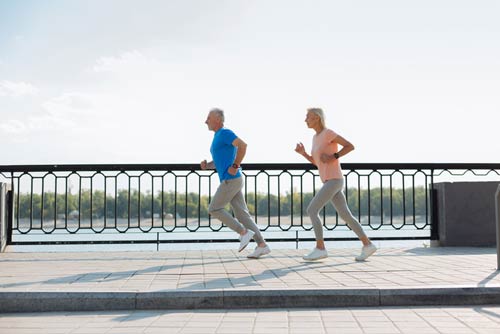You can go to the best cardiologists…get a myriad of blood tests and cutting-edge diagnostic imaging… But answering one simple question is a surprisingly reliable indicator of whether or not you’re headed for a heart attack.
That’s the finding of major new study that followed more than 420,000 middle-aged people for six years.1
The question is this: How fast do you walk?
Middle-aged people who report they are slow walkers are at much higher risk of heart disease, according to a team of researchers at the NIHR Leicester Biomedical Research Centre in the UK.
Participants were asked to rate their usual walking pace as “slow,” “steady/average,” or “brisk.” They also underwent an exercise test in a laboratory to determine their fitness levels.
After 6.3 years of follow-up, 8,598 of the participants had died. Heart disease had killed 1,654 of them.
Professor Tom Yates of the University of Leicester led the study. “Slow walkers were around twice as likely to have a heart-related death compared to brisk walkers,” he said.
The findings took into account whether a person had other known risk factors such as smoking, obesity, a bad diet, or lack of exercise. No matter their health situation or lifestyle, self-reported walking speed was an accurate marker of whether a person was headed for a heart attack.
“Habitual walking pace is an independent predictor of heart-related death,” Professor Yates said.
The study was published in the European Heart Journal.
Best Way to Get in Shape
If you’re a slow walker, it’s time to get in better shape. We recommend high-intensity interval training (HIIT). It’s all about maximizing results while minimizing workout time. The average session lasts 20 minutes or less.2
Two weeks of HIIT raises your aerobic capacity—VO2max—just as much as two months of steady-state cardio such as jogging. And research shows a high VO2max is the best predictor of 10-year survival rates among heart disease patients.3
The basic formula for HIIT is simple. Do whatever form of cardio you like. It could be running, biking, swimming, elliptical, step trainer, or whatever you have available.
First, warm up by doing the activity slowly for three to five minutes…then sprint at an all-out pace for the next 30–60 seconds.
Then slow down for the next minute or two. Repeat this cycle five to seven times. Cool down for at least two minutes by doing the activity slowly.
The heart benefits of HIIT were confirmed in a large Norwegian study in 2012. It looked at 4,846 people with heart disease. It found that HIIT was better than traditional, lower-intensity exercise in reducing heart attacks.4
Editor’s Note: If you are worried about your heart, there’s a natural nutrient you should know about. It has been shown to lower cholesterol safer than a well-known prescription drug.
Discover all the details HERE.
Like this Article? Forward this article here or Share on Facebook.
References:
1 https://www.livescience.com/60268-walking-speed-heart-disease.html
2 https://www.institutefornaturalhealing.com/2015/05/friday-five-reasons-to-switch-to-high-intensity-interval-training-hiit/
3 https://www.eurekalert.org/pub_releases/2017-08/uol-sss082917.php
4 https://www.verywell.com/will-high-intensity-exercise-trigger-a-heart-attack-2223338

